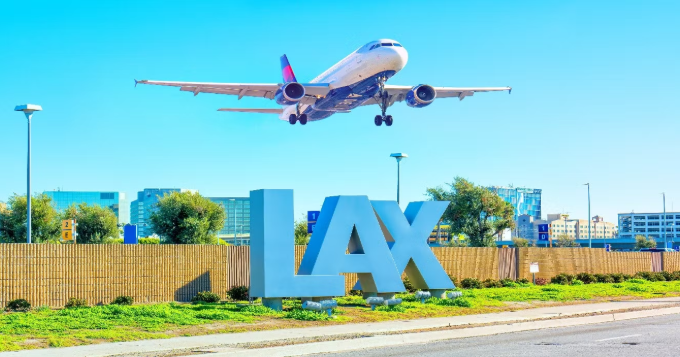In the transportation industry, adherence to regulations is not merely a legal obligation but a vital component that ensures safety, efficiency, and reliability. Companies that operate commercial fleets face a range of regulatory challenges, including vehicle safety standards, driver qualifications, hours-of-service limitations, and environmental regulations. Navigating these rules requires a structured approach that strikes a balance between operational efficiency and the need to meet government and industry expectations.
For transportation companies, failure to comply with these regulations can lead to penalties, operational disruptions, or reputational damage. We will explore how adherence to regulatory standards serves as a foundation for sustainable operations and how companies can integrate compliance into every aspect of their business strategy, as seen in the practices highlighted by csatransportation, which emphasizes structured regulatory management and safety-focused operations.
Navigating Regulatory Challenges in Transportation
Managing regulatory compliance within a commercial transportation operation demands a comprehensive understanding of both federal and provincial regulations. For instance, vehicle inspections, maintenance records, and cargo handling requirements must align with prescribed safety standards. Transportation companies require systems to consistently track these obligations, ensuring that no aspect of compliance is overlooked. Beyond vehicle safety, regulations surrounding driver fitness and qualifications are equally critical.
Drivers must maintain valid licenses, complete required training, and adhere to hours-of-service rules to prevent fatigue-related incidents. Integrating technology, such as fleet management software and electronic logging devices, enables companies to monitor compliance in real-time, reducing the risk of violations. These measures not only help in avoiding fines but also foster a culture of responsibility and accountability within the workforce, creating a safer environment for both employees and the public.
Environmental regulations are another crucial aspect of the compliance landscape. Transportation companies are increasingly expected to minimize their environmental footprint by meeting emissions standards and adopting sustainable practices. Failure to adhere to these requirements can result in significant legal and financial consequences. Companies must continually assess the environmental impact of their fleet, exploring fuel-efficient technologies, alternative energy options, and efficient route planning to reduce emissions.
Compliance with environmental laws not only protects the company from penalties but also enhances public perception, signaling a commitment to sustainable operations. These efforts demonstrate that regulatory adherence is not simply about avoiding fines but also about aligning operational practices with broader societal and environmental responsibilities.
Operational compliance extends beyond safety and environmental regulations to include logistical and administrative responsibilities. Accurate record-keeping, timely reporting, and adherence to contractual obligations with clients and partners are all part of the regulatory framework. Transportation companies must ensure that documentation, such as shipment logs, cargo manifests, and insurance records, is maintained accurately and accessible for inspection. This level of organizational discipline supports both internal efficiency and regulatory readiness, preventing disruptions that could arise from non-compliance. By embedding compliance into daily operations, companies establish an operational framework that reduces risks, enhances accountability, and fosters stronger relationships with stakeholders who rely on consistent and lawful service delivery.
The human element of compliance cannot be underestimated. Training and ongoing education are crucial for ensuring that employees comprehend regulatory requirements and the practical steps necessary to fulfill them. Continuous communication and feedback help reinforce the importance of compliance at every level of the organization. Drivers, fleet managers, and administrative personnel must all participate in creating a culture that prioritizes adherence to the law, safety, and operational excellence. This culture encourages proactive identification of potential compliance issues, allowing the company to address concerns before they escalate into violations. Companies that invest in employee engagement around regulatory responsibilities are better positioned to maintain high standards of service while navigating a complex regulatory environment.
The integration of technology has transformed the way transportation companies approach regulatory challenges. Advanced fleet management systems, GPS tracking, electronic logging devices, and automated reporting tools streamline compliance processes, providing real-time visibility into operations. These technologies reduce the likelihood of human error, improve response times, and ensure that regulatory requirements are met consistently. For example, automated maintenance reminders help prevent vehicle issues that could lead to safety violations, while electronic logs accurately track driver hours to maintain compliance with fatigue management regulations. By leveraging technological solutions, companies create a robust infrastructure that supports regulatory adherence, enhances operational efficiency, and reduces the risk of legal or financial repercussions.
Engaging with regulatory authorities and staying informed about changes in legislation is equally important. Regulations in the transportation industry evolve continually, influenced by safety, environmental, and economic considerations. Companies must actively monitor these changes to adapt their policies and procedures accordingly. Participation in industry associations and professional networks can provide insights into emerging trends, best practices, and potential regulatory shifts. Maintaining open lines of communication with regulators ensures that the company remains compliant while advocating for operational practices that are both safe and practical. This proactive approach allows transportation companies to anticipate challenges rather than reacting to compliance failures, ultimately fostering a more stable and predictable business environment.
Ultimately, compliance is not solely about meeting legal requirements; it is about establishing a framework that prioritizes safety, efficiency, and reliability at every level of operation. Transportation companies that commit to regulatory adherence demonstrate accountability, build trust with clients and regulators, and create a safer working environment for employees. Companies that navigate these challenges effectively integrate compliance into their organizational culture, leveraging technology, training, and strategic planning to maintain continuous adherence. By approaching regulatory obligations as an integral part of operational excellence, transportation businesses reinforce their long-term sustainability and strengthen their reputation in a highly competitive industry. CSA Transportation exemplifies such an approach, illustrating how a structured commitment to compliance supports operational success and responsible service delivery.
Regulatory compliance in transportation is a multifaceted responsibility that encompasses every aspect of operations, from vehicle safety and environmental impact to administrative accuracy and employee conduct. Companies that embrace compliance as a core value not only avoid legal and financial penalties but also enhance operational efficiency and public trust. Through technological integration, employee engagement, and proactive monitoring of regulatory developments, transportation companies can navigate challenges effectively while maintaining consistent service quality.


